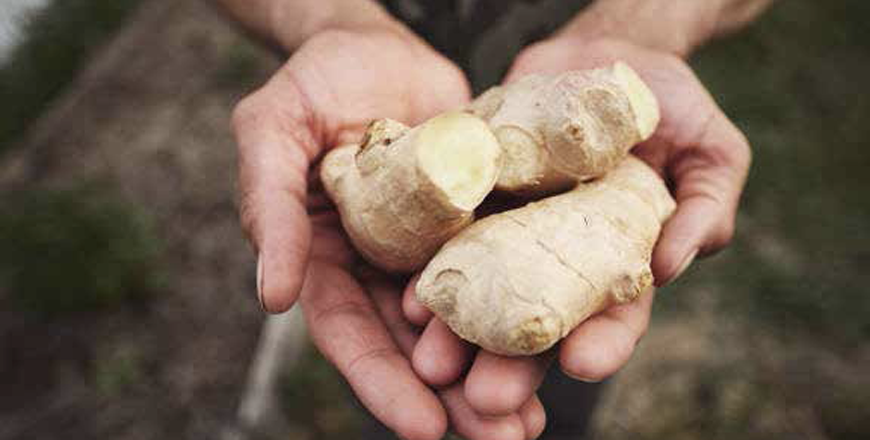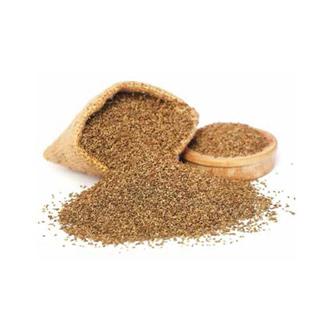You are here
Unlocking the Power of Root Vegetables
By Helen Batmany , Family Flavours - Feb 09,2025 - Last updated at Feb 09,2025

Photo courtesy of Family Flavours magazine
By Helen Batmany,
Masters in Human Nutrition
Root vegetables have long been known for their rich flavours and powerful health benefits. Among these underground root vegetables are galangal, horseradish, kudzu, ginger and turmeric.
Used in ancient healing remedies for their vibrant colours and aromatic qualities, these superfoods are also prized for their impressive medicinal properties.
Discovering the healing benefits
These age-old roots offer a treasure of vitamins, antioxidants and anti-inflammatory compounds that can transform your diet and enhance overall wellbeing.
Galangal
Galangal, often referred to as Thai ginger, is a close relative of both ginger and turmeric. Native to Southeast Asia, it is commonly found in countries such as Indonesia, Thailand and Malaysia.
Rich in antioxidants, galangal is traditionally used to ease arthritis pain, relieve coughs and colds, support digestion and reduce bloating.
It can be consumed fresh or dried. Thin slices of galangal are frequently used in soups or broths adding a sharp flavour.
When in powder form, it can be used in baked casseroles, curries and even enjoyed as a tea.
Horseradish
Horseradish is a spicy root vegetable belonging to the mustard family. Native to southeastern Europe, it contains an essential oil similar to mustard, giving it a sharp, bitter flavour comparable to wasabi; Wasabi is a spicy, green condiment commonly used in Japanese cuisine.
Similarly, horseradish is used as a condiment alongside meats, potatoes and beets. It is rich in phytochemicals like sinigrin, known for its anti-inflammatory properties.
Additionally, horseradish is rich in Vitamin C, which led sailors in the past to use it to prevent scurvy caused by Vitamin C deficiency. It is also recognised for its ability to stimulate digestion and support the respiratory system, especially in treating coughs and bronchitis.
Kudzu
Kudzu root, also known as Japanese arrowroot, is native to China, Japan and Korea.
Kudzu root is packed with antioxidants, which help protect cells from oxidative stress, a condition that can contribute to various diseases. Kudzu root has been used in traditional Chinese medicine to help lower blood pressure.
Kudzu root is also known for its ability to stop diarrhea and curb alcohol cravings, making it useful in treating alcoholics.
Additionally, it is rich in phytoestrogens — plant compounds similar to estrogen in the human body — which can help alleviate hot flashes.
The roots of the kudzu plant can be dried and ground
into a powder, which some people use as a coating for fried foods, or as a thickening agent for soups and sauces. Additionally, kudzu root is consumed as a herbal supplement or as a tea.
Ginger
Ginger is native to tropical Asia, however now it is widely cultivated in many parts of the world.
It contains a high concentration of antioxidant compounds, with gingerol being one of the key components. Many studies highlight its anticancer properties.
Known for its long-standing use in traditional medicine, ginger is commonly used to relieve motion sickness, morning sickness and nausea. Ginger also aids in digestion reducing bloating and intestinal gas.
Ginger root can be consumed fresh, dried, as a tea, or even pickled.
Turmeric
Turmeric, often referred to as Indian saffron, is native to the tropical regions of South and Southeast Asia. It is a key ingredient in Indian curry and can be used either fresh or dried.
Known for its rich antioxidant properties, turmeric contains curcumin, a compound known for its potent antioxidant and potential anti-cancer benefits.
However, curcumin’s bioavailability — the extent to which it can be absorbed and utilised by the body — is relatively low.
Turmeric is widely recognised for its anti-cancer properties and has been used in traditional remedies for various purposes, including wound healing, alleviating intestinal gas and relieving menstrual cramps.
Finally, you shouldn’t worry about the calories of these root vegetables if taken naturally; the amount consumed will not exceed a few grams.
However, if you are using supplements derived from these products, be sure to inform your doctor to give you the correct dosage and to avoid any potential interactions with other medications.
Reprinted with permission from Family Flavours magazine
Related Articles
JAKARTA — The trendy café looks like a typical coffee shop in the Indonesian capital Jakarta, but in fact it sells herb-infused brews promis
A sign of a healthy digestive system is saliva production; once you feel your mouth is dry which indicates you probably lack digestive enzymes, your body will take longer to absorb vitamins and minerals
By Sheela ShethFood Expert Popularly known as Ajwain or Carom, Bishop’s weed is an annual herb that belongs to the family of Apiaceae o














